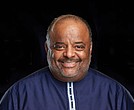Justices teach when the Supreme Court isn’t in session
The job doubles as all-expenses-paid trip
Brian Slodysko/The Associated Press | 7/13/2023, 6 p.m.

WASHINGTON For decades, the University of Hawaii law school has marketed its Jurist-In-Residence program to the Supreme Court as an all-expenses-paid getaway, with the upside of considerable “down time” in paradise.
The justices have enthusiastically participated.
“Your colleagues who were here most recently were Justices (Ruth Bader) Ginsburg, (Anthony) Kennedy, and (Stephen) Breyer, and I believe they all would recommend the experience highly,” the law school’s then-Dean Aviam Soifer wrote in a 2010 email trying to draw Justice Sonia Sotomayor to the school in Honolulu. “We will, of course, cover first-class airfare, excellent hotel accommodations, and all other travel expenses.”
Teaching is encouraged as a way to demystify the nation’s highest court while exposing the justices to a cross-section of the public. For decades, they have traveled the globe during court recesses to lecture. It is a permissible practice so long their earnings are less than the court’s roughly $30,000 cap on outside income.
In a statement responding to questions, the Supreme Court noted the $30,000 figure and added that “teaching must be at an accredited educational institution or continuing legal educational program and must be approved in advance by the Chief Justice (or by the Associate Justices if it involves teaching by the Chief Justice).”
Documents obtained by The Associated Press through public records requests reveal that some all-expenses-paid trips — to Italy, Iceland and Hawaii, among others — are light on classroom instruction, with ample time carved out for the justices’ leisure.
“This is a level of luxury that most Americans will never see. And the fact that the justices are receiving it by virtue of their positions seems to be outside ethical bounds,” said Gabe Roth, the executive director of Fix the Court, a nonpartisan watchdog group dedicated to following the Supreme Court.
The particulars of these excursions are often shrouded from public view because the justices are only required to offer a spare accounting on their annual financial disclosure forms.
But details obtained by the Associated Press reveal that these trips, which would cost the justices thousands of dollars if paid out of pocket, are in some cases subsidized by anonymous donors to the schools whose motivations can be difficult to assess.
Dan Meisenzahl, a spokesman for the University of Hawaii, said the school is so isolated from the continental United States that offering first-rate accommodations to the justices is one way to ensure they will make the trip.
“As a public university in one of the most isolated places on Earth, our Jurist-In-Residence program would not be possible without our donors and we thank them for their support.” Mr. Meisenzahl said in a statement.
While locking in details before Justice Samuel Alito’s 2011 visit to Honolulu, a University of Hawaii law school official, Cyndi Quinn, promoted the program’s flexibility.
“We would like to propose a schedule that suits his preference (eg. time of day to start, other activities such as golf, snorkeling, hiking, cano(e) paddling, etc.) as well as activities and visits Mrs. Alito would prefer,” Ms. Quinn wrote Justice Alito’s staff. “What I do recall is that Justice Alito would prefer starting his day after 10 a.m. and leave some ‘down time’ for some much-needed, no doubt, rest and relaxation?”
Besides Justices Ginsburg, Kennedy, Alito and Breyer, Justices Antonin Scalia and Sotomayor also participated in the program, which the local law firm Case Lombardi currently helps sponsor.
Soon after being seated on the Supreme Court, Justices Neil Gorsuch and Brett Kavanaugh joined the faculty of the Antonin Scalia School of Law at George Mason University in Virginia.
As required, they both reported their teaching contracts and compensation, which climbed to about $25,000 a year. But the justices were not a regular presence at the school’s Arlington, Va., campus, which lies just across the Potomac River from the Supreme Court.
Instead, they were in classrooms in Italy, Iceland and England, according to emails and other documents, which show the public university also paid the justices’ travel and living expenses there.
Under the arrangement, Justices Gorsuch and Kavanaugh, nominated to the court by former President Trump, each taught a roughly two-week-long summer course that largely limited hours of instruction to mornings, leaving them and their families ample time for leisure and exploration.
Their contracts coincided with a significant expansion of the law school made possible through tens of millions of dollars in contributions from conservative donors, some of whom gave anonymously through George Mason’s foundation.
A $20 million contribution from an anonymous donor in 2016, which has been widely reported, was made contingent on renaming the school for Justice Scalia, as well as hiring roughly a dozen new faculty members, according to records the school previously released.
To ensure the school complied with the agreement, the donor and the school agreed that Leonard Leo, then an executive vice president of the Federalist Society, would serve as an overseer, records show. An additional $10 million was contributed through the arrangement by the Charles Koch Foundation, which was founded by billionaire conservative donor Charles Koch.




